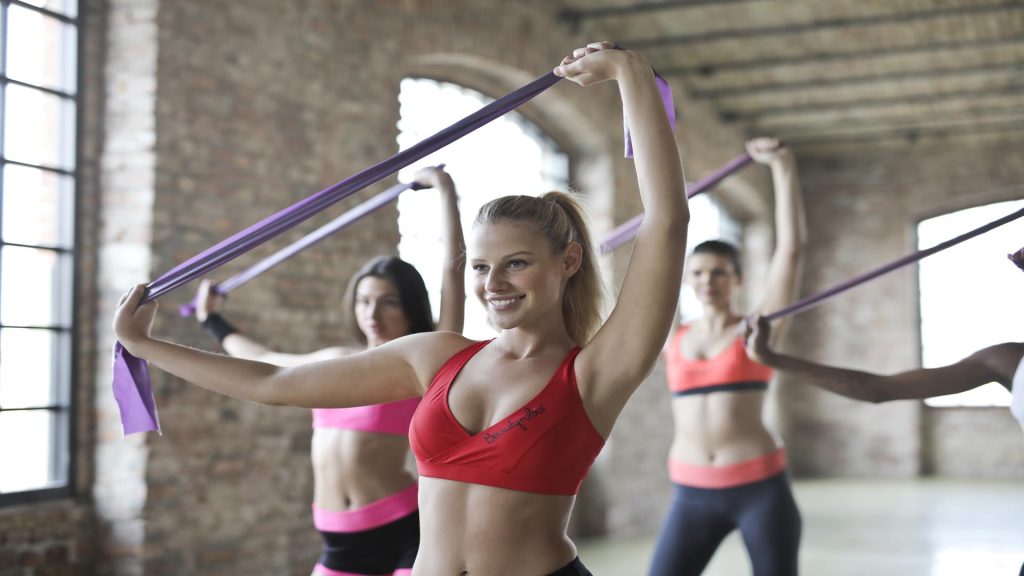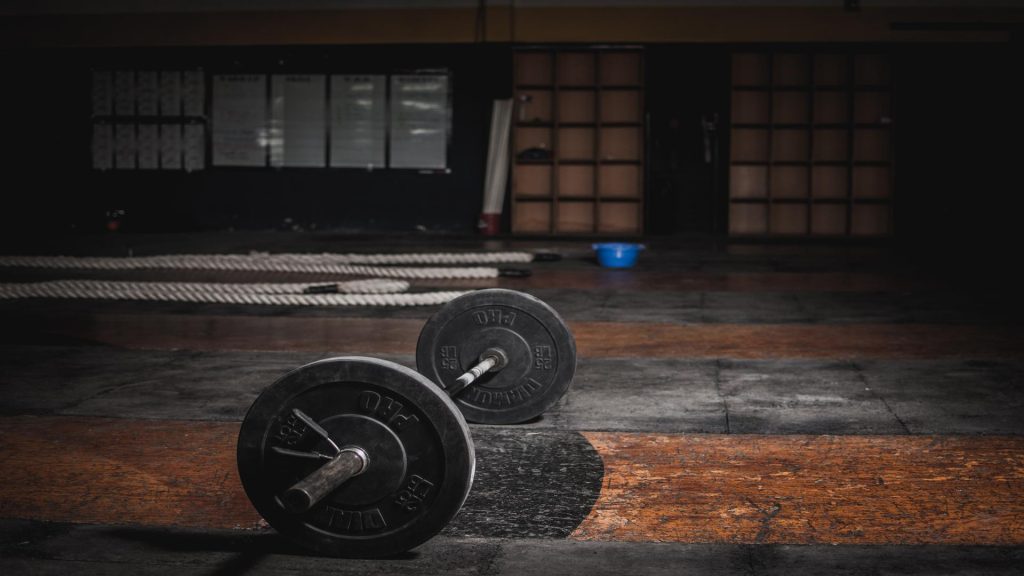
Outline
I. Introduction
- Definition of fitness and its importance
II. Different Fitness Methods
A. Cardiovascular Exercise
1. Benefits of cardiovascular exercise
2. Different types of cardio exercises
3. Tips for effective cardio workouts
B. Strength Training
1. Importance of strength training
2. Different types of strength training exercises
3. The role of proper form and technique
C. Flexibility and Mobility Exercises
1. Benefits of flexibility and mobility exercises
2. Different stretching techniques
3. Tips for improving flexibility and mobility
D. High-Intensity Interval Training (HIIT)
1. Definition and benefits of HIIT
2. Sample HIIT workout routine
3. Precautions and safety measures for HIIT
E. Mind-Body Exercises
1. Overview of mind-body exercises
2. Popular mind-body exercises (e.g., yoga, Pilates, tai chi)
3. Mental and physical benefits of mind-body exercises
III. Customizing Fitness Methods
A. Considering individual fitness goals
1. Weight loss and fat burning
2. Muscle building and toning
3. Overall health and well-being
B. Modifications for different fitness levels
1. Beginners' guide to fitness methods
2. Challenges for intermediate and advanced individuals
3. Adapting workouts for seniors and people with disabilities
IV. Combining Fitness Methods
A. Benefits of combining different fitness methods
1. Breaking plateaus and avoiding boredom
2. Maximizing results and overall fitness
3. Preventing overuse injuries
V. Frequently Asked Questions
A. Can I lose weight with just one fitness method?
B. How often should I switch between different fitness methods?
C. Can I do strength training without using weights?
D. Are mind-body exercises effective for stress relief?
E. What is the best fitness method for older adults?
Fitness Methods: A Comprehensive Guide to Getting Fit
Introduction
Getting and maintaining fitness is an essential aspect of leading a healthy lifestyle. Regular exercise and physical activity offer numerous benefits, including weight management, increased energy levels, improved heart health, and reduced risk of chronic diseases. In this comprehensive guide, we will explore various fitness methods, their benefits, customization options, and how they can be combined for optimal results.
I. Different Fitness Methods
A. Cardiovascular Exercise
Cardiovascular exercise, also known as aerobic exercise, is any activity that increases heart rate and improves cardiovascular fitness. It includes activities like running, cycling, swimming, and dancing.
-
Benefits of cardiovascular exercise:
-
Improved heart health and increased lung capacity
- Weight loss and increased calorie expenditure
-
Enhanced mood and reduced stress levels
-
Different types of cardio exercises:
-
Running/jogging
- Cycling
- Swimming
- High-impact aerobics
-
Dance workouts
-
Tips for effective cardio workouts:
-
Aim for at least 150 minutes of moderate-intensity cardio per week
- Mix up your workouts for variety and to target different muscle groups
- Use interval training for added intensity and calorie burn
B. Strength Training
Strength training involves resistance exercises that work against external forces to build muscular strength, endurance, and size. It can be done with weights, resistance bands, or bodyweight exercises.
-
Importance of strength training:
-
Increased muscle mass and metabolism
- Improved bone density and joint health
-
Enhanced functional fitness and injury prevention
-
Different types of strength training exercises:
-
Weightlifting
- Bodyweight exercises (push-ups, squats, lunges)
-
Resistance training with bands or machines
-
The role of proper form and technique:
-
Focus on maintaining good form to avoid injuries
- Gradually increase weight or resistance as your strength improves
- Incorporate compound exercises that target multiple muscle groups
C. Flexibility and Mobility Exercises
Flexibility and mobility exercises improve the range of motion in your joints and muscles. These exercises can be static stretches, dynamic movements, or specific techniques like yoga or Pilates.
-
Benefits of flexibility and mobility exercises:
-
Improved joint health and posture
- Increased athletic performance and reduced muscle soreness
-
Better functional movements and injury prevention
-
Different stretching techniques:
-
Static stretching
- Dynamic stretching
-
Proprioceptive neuromuscular facilitation (PNF) stretching
-
Tips for improving flexibility and mobility:
-
Perform stretching exercises regularly, ideally after a warm-up
- Hold each stretch for 20-30 seconds without bouncing or forcing the movement
- Combine stretching with strength training for optimal results
D. High-Intensity Interval Training (HIIT)
HIIT involves short periods of intense exercise alternated with brief recovery periods. It is a time-efficient and effective method for improving cardiovascular fitness and burning calories.
-
Definition and benefits of HIIT:
-
Increased calorie burn and fat loss
- Improved cardiovascular endurance
-
Time-effective workouts (typically 20-30 minutes)
-
Sample HIIT workout routine:
-
Warm-up: 5 minutes of light cardio
- Interval sets: 20 seconds of intense exercise, followed by 10 seconds of rest (repeat for 4-5 sets)
-
Cool-down: 5 minutes of low-intensity cardio and stretching
-
Precautions and safety measures for HIIT:
-
Gradually increase intensity and duration to avoid overexertion
- Listen to your body and take rest days between HIIT sessions
- Modify exercises if needed to accommodate fitness levels or pre-existing conditions
E. Mind-Body Exercises
Mind-body exercises focus on the connection between the mind and body to improve overall well-being. They often combine physical movements with mental focus and breathing techniques.
-
Overview of mind-body exercises:
-
Examples include yoga, Pilates, tai chi, and qigong
-
Emphasize body awareness, relaxation, and stress reduction
-
Popular mind-body exercises:
-
Yoga: Combines physical postures, breathing, and meditation
- Pilates: Focuses on core strength, flexibility, and control of the body
-
Tai chi: A Chinese martial art that promotes relaxation and balance
-
Mental and physical benefits of mind-body exercises:
-
Stress reduction and improved mental clarity
- Increased flexibility, balance, and posture
- Enhanced body-mind connection and mindfulness
II. Customizing Fitness Methods
A. Considering individual fitness goals
When choosing a fitness method, it's essential to consider your individual fitness goals.
-
Weight loss and fat burning:
-
Focus on cardiovascular exercise and HIIT workouts
-
Incorporate strength training to build lean muscle mass and boost metabolism
-
Muscle building and toning:
-
Prioritize strength training exercises with heavier weights or resistance
-
Include compound exercises and progressive overload for muscle hypertrophy
-
Overall health and well-being:
-
Combine cardiovascular exercise, strength training, and mind-body exercises
- Emphasize a well-rounded fitness routine for overall health benefits
B. Modifications for different fitness levels
Fitness methods can be modified to cater to different fitness levels and capabilities.
-
Beginners' guide to fitness methods:
-
Start with low-impact cardio exercises, such as walking or swimming
- Begin strength training with lighter weights or bodyweight exercises
-
Focus on proper form and gradually increase intensity and duration
-
Challenges for intermediate and advanced individuals:
-
Incorporate high-intensity interval training and advanced strength training techniques
- Explore advanced variations of mind-body exercises
-
Set specific goals to push your limits and avoid plateauing
-
Adapting workouts for seniors and people with disabilities:
-
Focus on low-impact exercises and gentle stretching for seniors
- Modify strength training exercises to accommodate physical limitations
- Consult with a professional trainer or physical therapist for personalized guidance
III. Combining Fitness Methods
A. Benefits of combining different fitness methods
Combining different fitness methods offers numerous benefits and helps overcome limitations.
-
Breaking plateaus and avoiding boredom:
-
Prevents the body from adapting to a specific exercise routine
-
Provides variety and challenges different muscle groups
-
Maximizing results and overall fitness:
-
Different methods target multiple aspects of fitness (strength, endurance, flexibility)
-
Enhances overall physical performance and functional fitness
-
Preventing overuse injuries:
-
Varying exercises reduces the risk of overuse injuries
- Allows for adequate recovery time for specific muscle groups
IV. Frequently Asked Questions
A. Can I lose weight with just one fitness method?
While incorporating a single fitness method can contribute to weight loss, combining different methods is generally more effective. A combination of cardiovascular exercise, strength training, and a balanced diet produces better weight loss results.
B. How often should I switch between different fitness methods?
There is no strict rule for switching between fitness methods. However, it is recommended to change your routine every 4-6 weeks to prevent plateauing and maintain motivation.
C. Can I do strength training without using weights?
Absolutely! Bodyweight exercises such as push-ups, squats, lunges, and planks can effectively build strength and muscle.
D. Are mind-body exercises effective for stress relief?
Yes, mind-body exercises like yoga and tai chi are known for their stress-relieving benefits. They promote relaxation, improve mindfulness, and reduce anxiety.
E. What is the best fitness method for older adults?
For older adults, a combination of low-impact cardiovascular exercises (e.g., walking, swimming), strength training with lighter weights, and flexibility exercises like yoga or tai chi are ideal. It is important to focus on maintaining mobility, balance, and overall functional fitness.
� Fitness Methods: A Comprehensive Guide to Getting Fit
� FITNESS
� FITNESS_METHODS
� Discover various fitness methods, their benefits, customization options, and how to combine them for optimal results. Get fit and improve your overall health with the help of this comprehensive guide.
Thank you for reading. For more insights, visit our #healthzone#3.com/blog">BLOG. We appreciate your support!



